Equipment leasing is a financing approach where businesses rent gear rather than buy it outright. This process permits corporations to access fundamental machinery, automobiles, and technology without considerable upfront expenses.
At the end of the lease time, businesses have the opportunity to replace, revive, or buy the equipment. This article will examine the different aspects of equipment leasing, delivering a complete direction to comprehending its advantages, disadvantages, and methods.
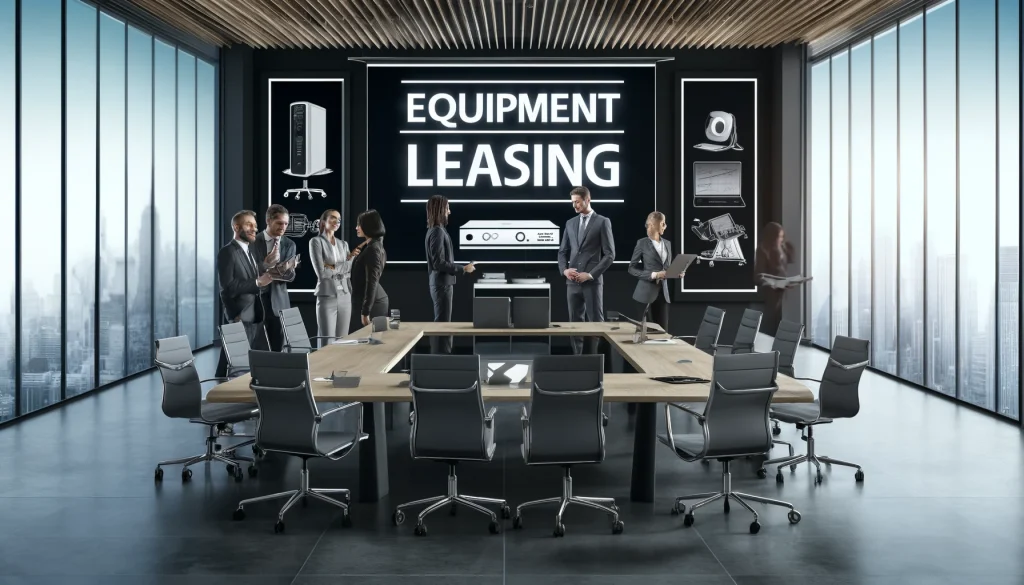
Business Funding, Leasing, Consolidations As Fast As 24 Hours (919) 752-4510
Key Takeaways
- Equipment leasing permits businesses to rent essential equipment without the increased upfront expenses of purchasing.
- There are different kinds of equipment leases, including working leases, capital leases, and lease-to-own contracts.
- Leasing can deliver cost-conserving, flexibility, and tax benefits, but may also result in increased long-term prices and the absence of ownership.
- Comprehending the terms and conditions of a lease contract is required to create knowledgeable decisions.
- Selecting the proper leasing company concerns considering importance, knowledge, and customer authorization.
Understanding Equipment Leasing
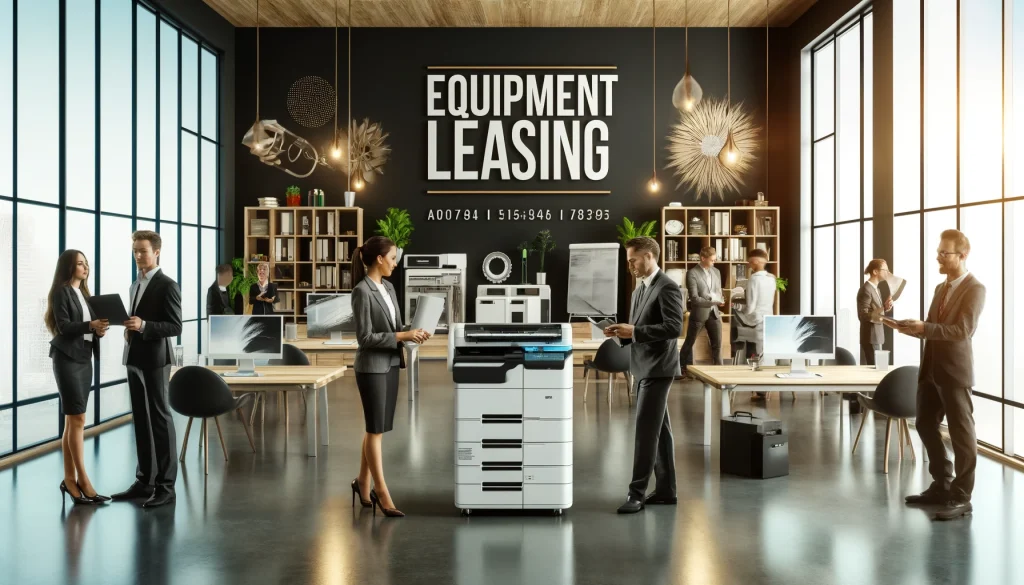
Definition and Overview
Equipment leasing is a sort of financing in which you rent equipment rather than buy it outright. You can rent expensive tools for your business, such as machinery, automobiles, and computers. The equipment is hired for a precise period; once the agreement is up, you may replace the equipment, restart the lease, or buy the equipment. Equipment leasing offers you the key to much-needed equipment without the more increased monthly cost associated with a loan. It is a standard option for businesses that don’t have the capital to buy a piece of supplies outright or afford a down payment. Relying on the kind of lease, you will either rent and replace the equipment or purchase it with a balloon payment at the back of the lease time.
Key Components of a Lease Agreement
A lease agreement generally contains several key elements:
· Lease Term: The duration for which the tools will be leased.
· Monthly Payments: The payment to be paid each month for the usage of the equipment.
· End-of-Lease Options: Options available at the end of the lease term, such as replacing, renewing, or buying the equipment.
· Maintenance Responsibilities: Details on who is responsible for keeping the equipment during the lease period.
· Usage Restrictions: Any restrictions on how the tools can be used.
Common Types of Leased Equipment
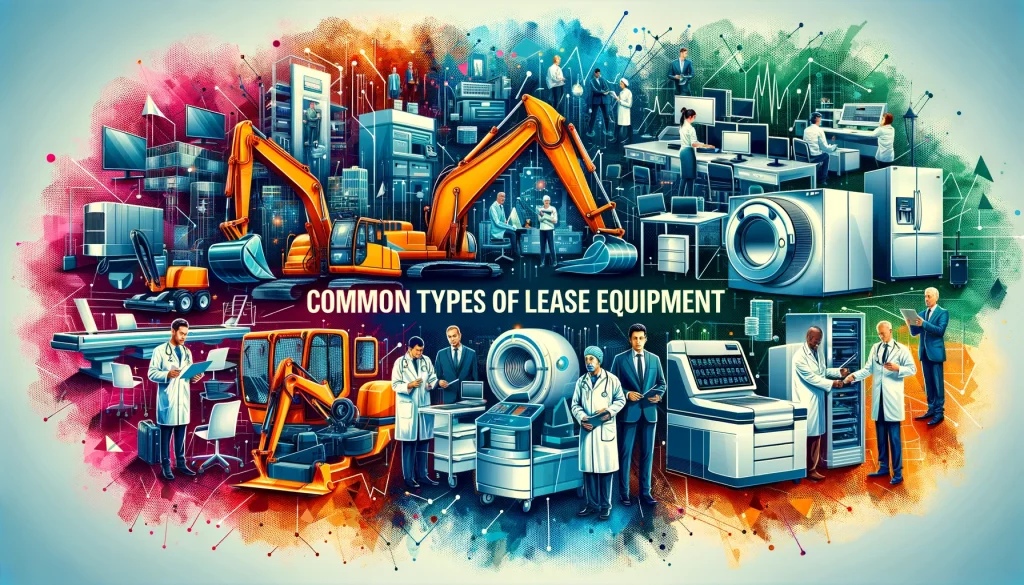
Businesses across different industries opt for tools leasing to meet their operational requirements. Some typical types of leased equipment include:
Office equipment leasing
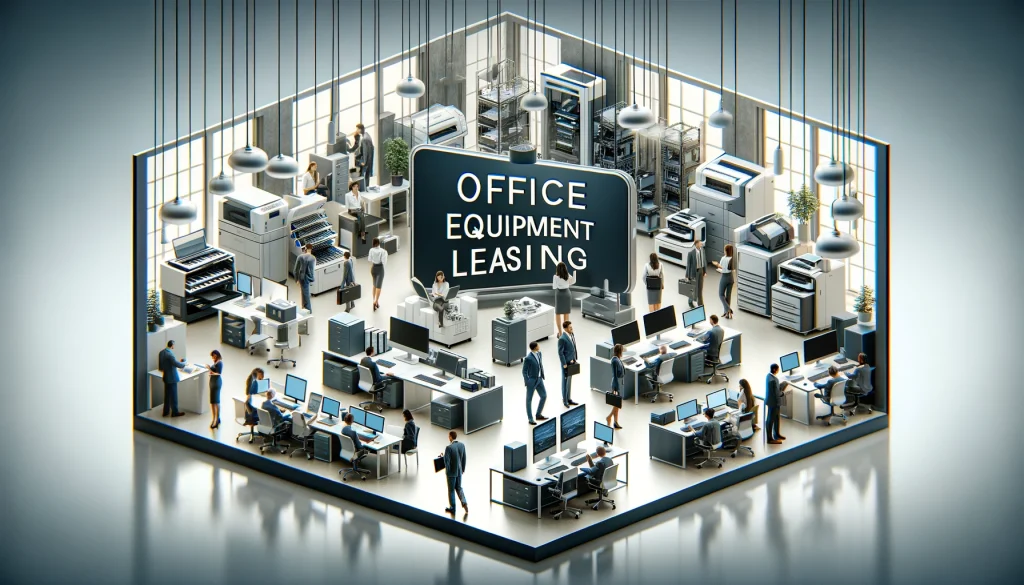
Office equipment leasing is a cost-effective solution for businesses examining to get the required equipment without creating a large upfront investment. By leasing office equipment such as computers, printers, copiers, and furniture, businesses can save their capital and have keys to the most delinquent technology without bothering about upkeep or advancements.
Leasing office supplies also delivers flexibility, as businesses can efficiently elevate or count equipment as required without the financial hurdle of buying unique equipment. Besides, leasing may present tax advantages as lease payments are generally thought a deductible business expenditure.
General, office equipment leasing can assist businesses enhance efficiency, lower costs, and remain competitive in today’s fast-paced business atmosphere. (such as printers, copiers, computers)
Construction equipment leasing

Construction equipment leasing is a kind of financial arrangement where a construction company or contractor leases tools from a leasing company for a limited period. This arrangement permits the construction company to access the required equipment without having to buy it outright, which can be expensive.
Leasing construction equipment can be a cost-effective choice for companies that only require the equipment for short-term tasks or do not have the funds to buy unique equipment. Leasing agreements commonly include times such as monthly payments, upkeep burdens, and the period of the lease.
Some typical kinds of construction equipment that can be leased include excavators, bulldozers, cranes, loaders, and compactors. By leasing tools, construction companies can keep funds on upkeep and storage expenses, as well as have keys to the most delinquent technology and standards without having to buy new gear. Besides, leasing equipment can supply companies with flexibility in raising their help up or down based on project conditions. (such as bulldozers, cranes, excavators)
Medical equipment leasing (such as diagnostic machines, and surgical equipment)

Medical equipment leasing is a cost-effective resolution for healthcare establishments examining to obtain required equipment without the weighty upfront expenses associated with purchasing. Leasing medical equipment, such as diagnostic machines and surgical equipment, allows facilities to access the latest technology without the economic hindrance of ownership.
Agricultural equipment leasing (such as tractors, combines, irrigation systems)

Agricultural equipment leasing is a favored choice for farmers and agricultural businesses examining to access the tardy technology and machinery without the upfront expense of purchasing gear outright. Leasing permits farmers to improve efficiency, productivity, and profitability by using contemporary tractors, mixes, and irrigation techniques.
Transportation equipment leasing (such as trucks, trailers, buses)

Transportation equipment leasing applies to leasing out different sorts of vehicles such as trucks, trailers, buses, or other ways of transportation for a defined period. This permits businesses to access the required equipment without the high upfront expenses associated with purchasing vehicles outright. Leasing transportation tools can deliver flexibility, cost conservation, and access to the most delinquent technology and advancements. Besides, leasing can help businesses evade the annoyance of upkeep and repair.
Manufacturing equipment leasing (such as CNC machines, and industrial robots)
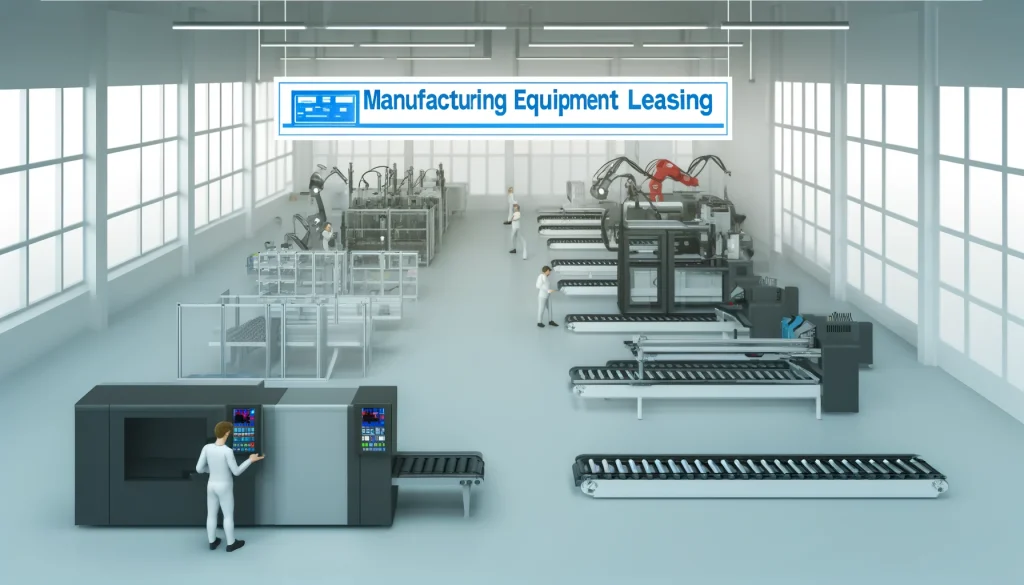
Manufacturing equipment leasing permits businesses to access developed machinery and technology without the increased upfront costs associated with purchasing. This can be extremely valuable for companies in the manufacturing industry that need technical equipment such as CNC machines and industrial robots.
Leasing manufacturing equipment supplies businesses with the flexibility to upgrade or replace equipment as required, without being fastened down to ancient machinery. It also allows to enhance cash flow by applying the price of equipment over time, rather than a big lump sum amount.
Besides, leasing manufacturing tools can supply tax advantages such as deducting lease payments as a business cost. This can support businesses to hold money and enhance their financial bottom line.
Overall, manufacturing equipment leasing presents a cost-effective solution for businesses to access and use the latest technology and machinery to enhance productivity and efficiency in their functions.
IT equipment leasing (such as servers, networking equipment, and software)
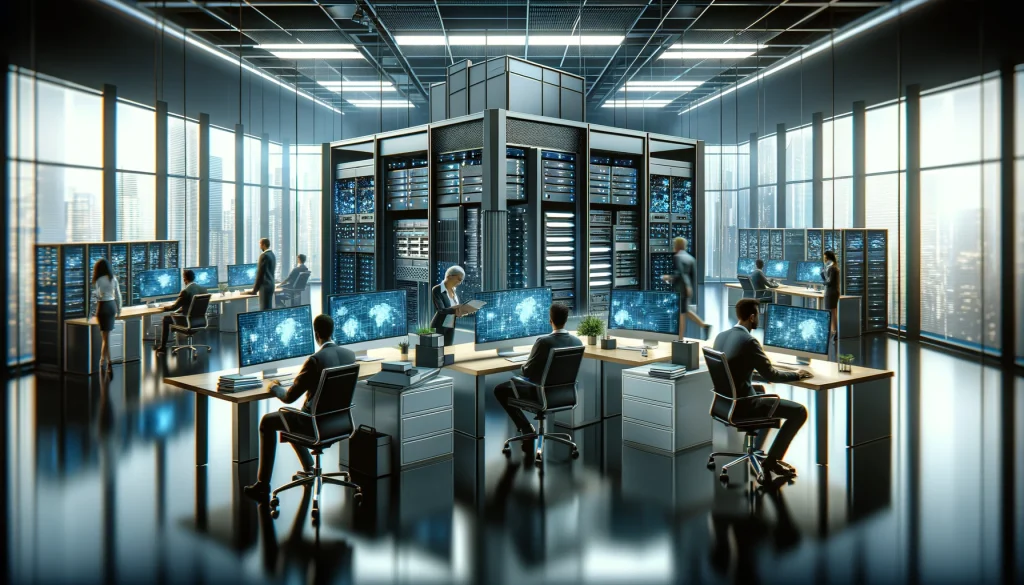
IT equipment leasing is a favored choice for businesses examining to elevate or develop their technology infrastructure without making a large upfront acquisition. Leasing IT equipment, such as servers, networking equipment, and software, permits enterprises to access the latest technology without the increased expenses associated with purchasing and holding these items.
Restaurant and food service equipment leasing (such as ovens, refrigerators, commercial kitchen appliances)

When creating or running a restaurant or food service business, developing the required equipment can be a considerable expense. Leasing this equipment can be a better cost-effective choice, as it permits businesses to access the equipment they require without a large upfront investment.
Fitness equipment leasing (such as treadmills, exercise bikes, weight machines)

Fitness equipment leasing is a fantastic opportunity for individuals or businesses examining to keep money on costly gym equipment. Leasing permits flexibility in terms of equipment choice, as additional machines can be leased for various periods to adjust to varying fitness goals or priorities. Besides, leasing eliminates the requirement for a large upfront investment, making it a cost-effective key for those examining making a home gym or outfitting a retail fitness building.
Treadmills, exercise bikes, and weight machines are famous alternatives for fitness equipment leasing. These kinds of equipment are versatile and can be used for a combination of workouts, making them perfect for individuals examining to enhance their cardiovascular fitness, strength, and overall health. With leasing opportunities available for both residential and commercial services, fitness equipment leasing delivers a suitable and inexpensive way to complete fitness dreams without busting the bank.
leasing spinnaker equipment

Easing spinnaker equipment guides the procedure of relieving the tension and letting the spinnaker sail to smoothly and efficiently fly in the wind. This can concern adjusting the halyard and sheets to reduce the load on the sail and ensure it fills appropriately without extreme strain on the rigging or team. Adequately easing spinnaker equipment can improve the performance and management of the sail in varying wind situations.
Event and party equipment leasing (such as tents, tables, chairs)
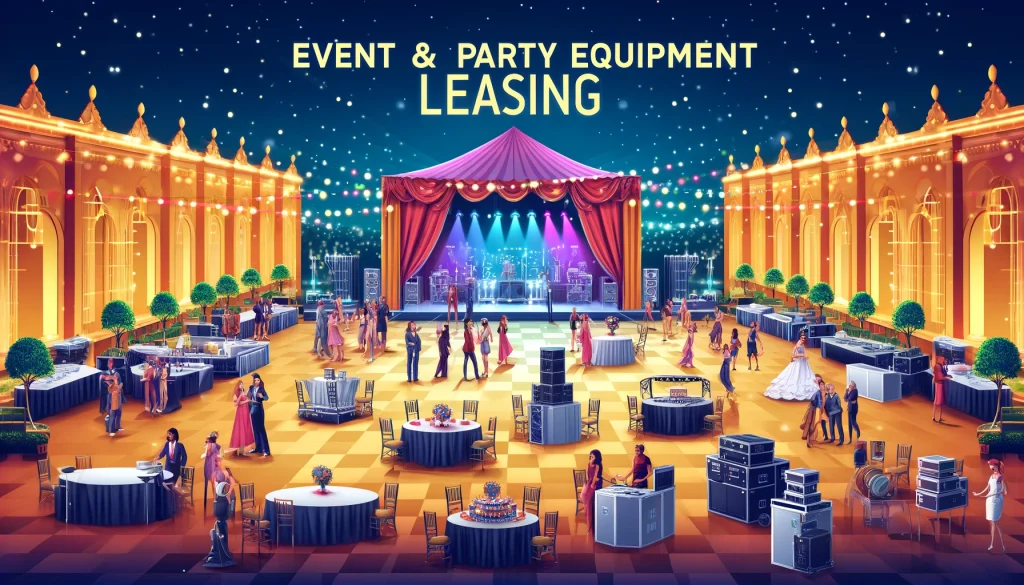
Event and party equipment leasing is a wonderful way to conserve time and money when designing a special event or celebration. Rather than buying pricey items that you may only use once or twice, you can merely rent everything you require for your party. This retains tents, tables, chairs, linens, lighting, audio equipment, and more.
Leasing event equipment also permits you to access a wider range of choices and styles than you may be able to afford if you were buying everything outright. You can select from diverse sizes and kinds of tents, different kinds of tables and chairs, and even specialty items like dance floors or photo stalls.
Besides, leasing event equipment can keep you in the aggravation of bulky items that you may not have an area for after your event is over. You can merely replace everything in the leasing business and let them take care of the clean-up and depository.
Overall, event and party equipment leasing can make the planning procedure much more comfortable and cost-effective, permitting you to concentrate on enjoying your event rather than stressing about the logistics. Equipment leasing can assist you get the instruments your business must when you can’t afford the upfront expenses of purchasing or require the equipment for a narrow time only.
How Equipment Leasing Works

Equipment leasing can assist you get the instruments your business requires when you can’t afford the upfront expenses of purchasing or require the equipment for a limited time only. Equipment leasing allows you to borrow equipment for a predetermined duration. You pay interest and fees, but you don’t own the gear once the lease is up.
The Leasing Process
If you choose to lease equipment for your business rather than buy it upfront, you enter into a lease contract with the tools owner or vendor. Similar to how a rental lease agreement works, the gear owner drafts an agreement, laying out how long you’ll lease the equipment and how much you’ll spend per month.
Lease Terms and Conditions
The lease terms and requirements will determine the course of the lease, the monthly payment amount, and any extra fees or interest. It’s essential to comprehend these terms to bypass any pitfalls later on.
End-of-Lease Options
At the back of the lease term, you generally have several choices:
· Return the tools to the landlord
· Revive the lease for an extra time
· Buy the equipment at its residual value
Comprehending these opportunities can assist you complete the best conclusion for your business requirements.
How does equipment leasing work? This guide will demystify supply leasing, describing why it’s an appealing choice for your business and delivering insights to drive the function.
Benefits of Equipment Leasing
Cost Savings
One of the immediate benefits of equipment leasing is the possibility of cost savings. Leasing usually needs no down payment, which can keep businesses thousands of dollars upfront. Further, monthly lease payments are normally lower than loan payments, making it more comfortable to manage cash flow. This lets businesses assign their funds to other essential dimensions, such as trade or growth.
Flexibility and Scalability
Leasing provides businesses with the flexibility to elevate their equipment as technology advances. This is especially useful for industries that depend on advanced technology, such as IT and healthcare. Leasing also permits businesses to scale their processes more efficiently, as they can lease other equipment as required without a substantial capital investment.
Tax Advantages
Leasing equipment can deliver significant tax advantages. In many cases, lease payments can be removed as a business expenditure, decreasing the general taxable income. This can result in substantial conserving, particularly for small businesses. According to current data, nearly 80% of U.S. companies lease some or all of their tools, partially due to these tax benefits.
Leasing equipment can be a strategic financial determination, delivering both instantaneous and long-term advantages for businesses of all sizes.
Drawbacks of Equipment Leasing
Leasing requires you to pay interest, which counts toward the overall expense of the machine over time. Occasionally, leasing can be more costly than buying the equipment outright – particularly if you buy the equipment when the lease term has passed.
While you can buy your equipment at the end of a capital lease, you may have to create a large balloon payment — which can push your business or need a different business loan. If you opt for an operational lease, you will lose entry to your equipment and any residual deal since the equipment must be returned to the landlord.
Leasing agreements usually come with stringent contractual obligations. These can contain maintenance requirements, use restrictions, and penalties for early ending. Failing to adhere to these terms can result in extra costs and difficulties for your business.
Relying on your budget and events, leasing your equipment may give your business significant advantages. However, there are disadvantages, such as higher costs over time, interest payments, and the absence of control over the gear.
Equipment Leasing vs. Equipment Financing
When choosing between equipment leasing and equipment financing, several aspects come into play. Leasing is a rental agreement, that permits businesses to utilize tools without holding them. This frequently results in lower monthly payments corresponding to financing. On the other hand, equipment financing concerns taking out a loan to buy the equipment, which implies higher monthly payments but eventual ownership.
Leasing is perfect for businesses that require to stay up-to-date with the most delinquent technology or equipment. It permits for flexibility and scalability, as you can effortlessly upgrade or adjust equipment at the end of the lease term. Also, leasing can be helpful for companies that want to bypass the high upfront expenses associated with purchasing equipment.
Financing is a more suitable option for businesses that intend to utilize the equipment for a long time and want to make equity. While the initial prices are higher, financing can be more cost-effective in the long run. It also supplies the advantage of ownership, which can be helpful for equipment with a long lifespan and increased resale value.
Deciding between leasing and financing relies on your business requirements, financial condition, and long-term objectives. Consider both choices carefully to make the best determination for your company.
What is Leasing Equipment vs Buying
Leasing equipment concerns renting equipment for a limited period, generally with monthly expenses. At the end of the lease term, the equipment is returned to the leasing company or opportunities may be available to buy the equipment.
Buying equipment concerns buying the equipment outright with a lump sum amount or financing opportunities. The equipment becomes the property of the customer and can be utilized for as long as required.
Benefits of equipment leasing vs buying
- Some benefits of leasing equipment include lower upfront expenses, flexibility to upgrade to more recent equipment, tax usefulness, and bypassing upkeep and repair prices. However, buying equipment may be more cost-effective in the long run and qualifies for full ownership and authority over the equipment. Finally, the decision between leasing and buying equipment relies on personal financial affairs and business requirements.
- Leasing equipment shows businesses the flexibility to access the latest technology and tools without a large upfront buy, permitting them to remain competitive in their industry. Besides, leasing typically needs less paperwork and delivers the opportunity to boost newer equipment efficiently.
- On the other hand, buying equipment permits businesses to have full ownership and management over the purchase, potentially leading to long-term cost conservation and the capability to customize the gear to fit exact requirements. However, purchasing equipment may need a substantial upfront investment and can be more dangerous if the equipment becomes obsolete or needs periodic maintenance.
PROS AND CONS OF EQUIPMENT LEASING
Pros:
1. Conservation of capital: Rather than hooking up a large part of the capital in purchasing equipment upfront, leasing permits businesses to preserve their capital for other buys or operational expenditures.
2. Access to the latest technology: Leasing permits businesses to upgrade their gear easily, providing they have the key to the latest technology without high upfront prices.
3. Flexibility: Leasing agreements can be tailored to suit the exact requirements of a business, including lease terms, cost schedules, and end-of-lease opportunities.
4. Tax benefits: Equipment leasing payments are frequently ministered as a business cost, which can be removed from taxable income, potentially reducing the overall tax load for the business.
5. Less risk: Leasing equipment can assist mitigate the chance of equipment obsolescence or devaluation, as the leasing company generally assumes accountability for equipment upkeep and disposal.
Cons:
1. Higher overall cost: While leasing permits for lower upfront prices, it can end up costing more over a long time due to interest charges associated with the lease contract.
2. Limited ownership rights: When a business leases tools, they do not own the equipment outright, which can modify their capacity to customize or trade the equipment.
3. Limited control and flexibility: Lease agreements may have limitations on equipment use or changes, restricting the business’s capability to adjust to changing conditions or events.
4. Potential for hidden costs: Some lease agreements may possess hidden charges or fees, which can improve the prevailing expense of the lease.
5. Credit requirements: Equipment leasing companies may have severe credit conditions, making it hard for some businesses to prepare for a lease agreement.
PROS AND CONS OF BUYING EQUIPMENT
Pros:
1. Equipment can assist enhance efficiency and productivity in the workplace.
2. Buying equipment can be a long-term investment that delivers off over time.
3. Having the right equipment can assist keep high-quality criteria in products and benefits.
4. Owning equipment offers you more authority and flexibility over when and how it is utilized.
5. Equipment can assist decrease manual work and physical stress on employees.
Cons:
1. Buying equipment can be a considerable upfront expense for businesses.
2. Technology advances fast, making equipment outdated in a short amount of time.
3. Equipment needs regular upkeep and repairs, counting to the overall expense of ownership.
4. Storage space may be needed to store reserves when not in use.
5. If the equipment is not used often, it may not be worth the investment.
Types of Equipment Leases
Operating Leases
Operating leases are more like rental agreements. You complete payments to operate the equipment for a typical period, usually shorter than the gear’s financial life. At the end of the lease, you can replace the equipment, continue the lease, or purchase it at reasonable market value. This type of lease is perfect for equipment that quickly loses importance, such as computers or gym equipment.
Capital Leases
Capital leases, also known as finance leases or $1 buyout leases, implicate fixed monthly costs with the opportunity to buy the equipment for a negligible price at the end of the lease. There is no uncertainty about the value of the equipment after the lease as the buyout periods are generally part of the initial agreement. This kind of lease is similar to a loan but involves a financing fee instead of interest.
Lease-to-Own Agreements
Lease-to-own agreements are structured so that specified payments are made over a set time, after which you possess the equipment in complete. While comparable to a loan, you pay a financing payment rather than interest. Be prepared for slightly more increased payments but with no more buyout price at the end of the agreement. Tax usefulness could assist offset the price of the monthly payments.
Can the equipment be leased?
Yes, equipment can certainly be leased, but certain requirements need to be completed:
1. Purchase Value: Equipment leasing is generally committed for high-value items. This can vary from costly single items like medical monitors and industrial machinery to multiple items like kiosks, software licenses, and phones. Typically, leases are not open for purchases under $3,000. Many major lenders put a minimum buy condition, usually between $25,000 and $50,000.
2. Tangible Assets: The equipment suitable for lease must be tangible and portable personal possessions, not always fixed to real estate. Samples include different types of machinery and electronic devices. Intangible items, such as training programs and contracts, are not eligible for leasing.
How to get started with equipment leasing
1. Research and understand the equipment leasing industry: Before leaping into equipment leasing, it is necessary to familiarize yourself with the industry. Learn about the different types of equipment leasing, the advantages and drawbacks, and the general procedure involved in leasing equipment.
2. Determine the type of equipment you want to lease: Determine the specific tools you want to lease and research the market for that equipment. Comprehend the need for that gear and make sure it aligns with your business objectives.
3. Find a reputable equipment leasing company: Examine equipment leasing businesses that have good importance and knowledge in the industry. Evaluate elements such as interest rates, lease terms, and customer service when choosing a leasing company.
4. Understand the lease terms and conditions: Before marking any lease agreement, make certain you comprehend all the terms and conditions involved. This contains the lease term, lease payments, supervision obligations, and end-of-lease opportunities.
5. Gather necessary documentation: To apply for equipment leasing, you will be required to supply documentation such as economic statements, a business strategy, and a personal credit record. Make certain you have all the required paperwork prepared before using for a lease.
6. Submit your lease application: Once you have selected a leasing company and collected all the required documentation, propose your lease application. The leasing company will examine your application and make a decision based on your creditworthiness and business viability.
7. Review and sign the lease agreement: If your application is authorized, review the lease contract carefully to ensure all terms are correct and adequate. Sign the agreement and set for the equipment to be delivered to your business site.
8. Make lease payments: Once the gear is provided and in usage, make sure to complete your lease payments on time as summarized in the lease agreement. Negligence to make payments can result in fines and potential repossession of the equipment.
9. Monitor the equipment: Regularly monitor the gear leased to confirm it is being held correctly and used efficiently. If you experience any problems with the equipment, reach the leasing company for support.
10. End-of-lease options: When the lease term is up, evaluate your choices for returning the equipment, buying it outright, or renewing the lease. Make certain to convey to the leasing company your preferences and track the required procedures for the end of the lease term.
How to Choose the Right Equipment Leasing Company
Selecting the right equipment leasing company is essential for providing a smooth leasing experience and bringing the best deal for your investment. Here are some key elements to consider:
Evaluating Reputation and Experience
When choosing an equipment leasing company, it’s important to evaluate their standing and experience in the industry. The best equipment leasing businesses often have a long track history of happy clients and positive reviews. Examine for companies that specialize in your industry or have knowledge of leasing the kind of equipment you require.
Understanding Lease Terms
Comprehending the lease terms is necessary to avoid any pitfalls down the line. Pay close concentration to the lease duration, cost schedule, and any extra fees. Make sure the terms are loose enough to adapt to your business requirements. Approximating several lease providers can help you get the most reasonable rate and terms.
Customer Support and Service
Good customer support can make a meaningful distinction in your leasing experience. Select a company that delivers excellent customer service and is responsive to your requirements. This includes support during the lease term and service with any problems that may arise. A company with strong customer support can assist provide a smooth and hassle-free leasing method.
Choosing the right equipment leasing company can greatly affect your business’s working efficiency and economic health. Take your time to research and select wisely.
The Application Process for Equipment Leasing
Required Documentation
To create the equipment leasing strategy, you ought to complete an equipment lease application. Be certain you have financial data available for your company and its headliners, as this may be needed upfront or after originally satisfying the application. Delivering detailed information about your business is important for a smooth application procedure.
Credit Evaluation
Once you submit your application, the lessor processes it and informs you of the result. This usually occurs within 24 to 48 hours of applying. Some lessors may not need financials or a business plan for applications on dollar payments ranging from $10,000 to $100,000. The credit evaluation will define the terms and requirements of your lease.
Approval Timeline
The approval and signing method is specific. If your application is authorized, review the terms one last time, sign the lease agreement, and complete any needed down payment. The whole procedure from application to support typically takes a few days, letting you begin using the equipment promptly.
Obtaining an equipment lease applies a systematic approach. Determine your requirements, research leasing companies, and apply for the lease that best fits your business needs.
Legal and Financial Considerations in Equipment Leasing
Understanding Lease Agreements
When joining an equipment lease, it is paramount to comprehend the terms and conditions outlined in the lease contract. Some of the most common components of a financing contract include the term of the loan, interest rates, prepayment fines, and foreclosure proceedings. Always confer with a financial adviser or legal counsel before marking any lease agreements to guarantee you’re making the best finding for your business.
Financial Impact on Business
Leasing equipment can have substantial financial importance for your business. It is important to consider the price of leasing versus purchasing, assessing aspects such as the acquisition price, amount to be financed, annual devaluation, tax rates, and inflation. Further, some lenders implement a specific term length and required service packages, which can add to the general cost if the lease term lengthens beyond how long you require the tools.
Legal Obligations and Compliance
Businesses must stick to different legal responsibilities and keeping requirements when leasing tools. This includes comprehending the contractual duties, such as monthly expenses and holds costs associated with unused gear. Failure to concede with these periods can result in legal and financial repercussions.
Remember, always confer with a financial adviser or legal counsel before signing any lease agreements to guarantee you’re making the best determination for your business.
Case Studies: Successful Equipment Leasing
Small businesses usually face significant challenges when it comes to obtaining the required equipment. Unlocking growth with industrial equipment leasing has been confirmed to be a game-changer for many. For example, a local bakery was able to lease high-end ovens and mixers, which permitted them to expand production and satisfy growing customer demand. This not only increased their income but also allowed them to develop their product line.
Large enterprises also help from equipment leasing. A multinational construction company, for instance, leased advanced machinery to embark on a large-scale project. This process underestimated their initial capital outlay and supplied the flexibility to elevate to newer models as technology advanced. The outcome was a more efficient project realization and substantial cost savings.
Other industries have unique requirements when it comes to equipment. In the healthcare sector, a mid-sized hospital leased state-of-the-art diagnostic machines. This allowed them to offer more useful services to their patients without the hurdle of a large upfront investment. Similarly, in the manufacturing industry, companies have leveraged leasing to stay competitive by constantly updating their machinery.
Equipment leasing can assist you get the instruments your business needs when you can’t afford the upfront costs of purchasing or require the equipment for a little time only.
Equipment leasing vs. other financing options
1. Equipment Financing: Unlike equipment leasing, equipment financing concerns taking out a loan to buy the equipment outright. The borrower owns the equipment from the beginning and pays back the loan amount plus interest over time.
2. Equipment Rental: Rather than leasing equipment for a comprehensive period, businesses can opt to lease gear on a short-term basis. This choice may be more cost-effective for one-off or periodic usage of equipment.
3. Line of Credit: Businesses can connect a line of credit from a bank or financial organization to use for purchasing supplies or other business needs. This option permits more significant flexibility in accessing funds as required.
4. SBA Loans: Small Business Administration loans are government-backed loans that can be utilized for a sort of business payments, including equipment investments. These loans generally have lower interest rates and longer repayment terms than customary loans.
5. Vendor Financing: Some equipment manufacturers or suppliers offer financing opportunities for their products. This can be a timely opportunity for businesses examining to buy equipment directly from the manufacturer.
Future Trends in Equipment Leasing
The fast pace of technological change is greatly affecting the equipment leasing industry. New technologies such as IoT and AI are being incorporated into leased equipment, delivering improved functionality and efficiency. This tendency is especially evident in industries where technology becomes outdated more fast, necessitating periodic upgrades.
The equipment leasing market is anticipated to see substantial change in the coming years. According to the 2024 Equipment Leasing & Finance U.S. Economic Outlook, this extensive report explores global and domestic movements impacting capital spending and economic development. The increasing demand for adaptable financing choices is driving this change, making leasing an appealing option for many businesses.
Sustainability is becoming a fundamental concern in equipment leasing. Companies are increasingly looking for green leasing options that permit them to lower their environmental impression. This includes leasing energy-efficient tools and embracing methods that encourage sustainability throughout the lease term. As businesses seek to stay competitive and environmentally accountable, the future of equipment leasing will be shaped by technological advances, market development, and a strong emphasis on sustainability.
1. Increased demand for flexibility: As businesses resume to guide uncertain economic circumstances, they will increasingly shift to equipment leasing as a way to access the latest technology without engaging in long-term investments. This will cause the demand for flexible leasing opportunities that allow businesses to efficiently upgrade or downgrade their equipment as required.
2. Growth in equipment-as-a-service (EaaS) models: EaaS is a subscription-based model that contains equipment leasing, maintenance, and support services in one package. This all-in-one solution facilitates the equipment procurement strategy for businesses and delivers them with a predictable monthly expense. As a result, we can hope to see a rise in the adoption of EaaS models in the equipment leasing industry.
3. Emphasis on sustainability: With growing awareness of environmental issues, businesses are becoming more aware of their carbon footprint. As a result, there will be a growing demand for eco-friendly equipment leasing opportunities that promote sustainability and decrease waste. Equipment leasing companies that deliver green equipment options will have a competitive benefit in the market.
4. Integration of technology: The equipment leasing industry is growing with advancements in technology such as artificial intelligence and IoT. These technologies are being incorporated into equipment to promote predictive upkeep, remote monitoring, and data analytics. Equipment leasing companies that leverage these technologies will supply more value-added benefits to their customers and remain ahead of the contest.
5. Collaboration with manufacturers and suppliers: Equipment leasing companies will strengthen their collaborations with equipment manufacturers and suppliers to facilitate the procurement strategy and offer a wider range of equipment choices to customers. By working closely with their partners, leasing companies can provide timely delivery, competitive pricing, and key to the most delinquent technology in the market.
6. Enhanced customer experience: In a competitive market, customer experience will be a key differentiator for equipment leasing companies. By investing in user-friendly digital platforms, responsive customer service, and personalized leasing solutions, companies can improve customer satisfaction and loyalty. Delivering a seamless and efficient leasing experience will be required for success in the future. 1. Technology Integration: As technology continues to advance, equipment leasing companies will be required to adjust and integrate the latest technologies into their operations. This includes using digital platforms for leasing transactions, executing IoT capabilities for tracking gear usage and upkeep, and leveraging data analytics for more efficient decision-making.
2. Sustainable Equipment Leasing: With a growing emphasis on sustainability and environmental commitment, equipment leasing companies will likely see a movement towards leasing more eco-friendly equipment. This could include electric vehicles, renewable energy systems, and energy-efficient machinery.
3. Flexibility and Customization: As businesses resume to guide unsteady economic circumstances, there will be a greater demand for flexible leasing options that can be tailored to meet the specific needs of each customer. This may include flexible lease terms, customized payment plans, and opportunities for upgrading or reducing equipment as required.
4. Remote Workforce Solutions: The shift towards remote work due to the COVID-19 pandemic has stressed the need for equipment leasing solutions that sustain a distributed workforce. This could include leasing technology such as laptops, mobile devices, and video conferencing equipment to enable remote collaboration and productivity.
5. Access to Capital: In an increasingly competitive market, equipment leasing companies may be required to explore alternative conceptions of capital to fund their leasing operations. This could include partnerships with fintech companies, crowdfunding platforms, or institutional investors to secure financing for equipment acquisitions.
6. Risk Management and Compliance: With regulatory requirements constantly growing, equipment leasing companies will be required to stay up-to-date on compliance and risk management best practices. This may include implementing stronger cybersecurity standards, conducting regular audits, and ensuring compliance with industry regulations.
Overall, the future of equipment leasing will probably be shaped by advancements in technology, a focus on sustainability, a need for flexibility and customization, and a change toward supporting remote workforces. Companies that can adjust to these trends and deliver innovative leasing solutions will be well-positioned to win in the evolving leasing landscape.
Conclusion
In conclusion, equipment leasing offers a flexible and cost-effective solution for businesses requiring access to essential tools and machinery without the burden of substantial upfront costs. By opting for leasing, companies can maintain their capital, stay present with the latest technology, and control their cash flow more effectively. Whether you decide to lease or buy, comprehending the nuances of equipment leasing can help you make informed decisions that align with your business goals. As you guide the complexities of equipment purchase, evaluate the advantages and potential drawbacks of leasing to determine the best fit for your operational requirements.
Frequently Asked Questions
What is equipment leasing?
Equipment leasing is a kind of financing in which you rent equipment rather than buy it outright. You can lease expensive equipment for your business, such as machinery, vehicles, and computers. The equipment is leased for a typical period; once the contract is up, you may return the equipment, renew the lease, or purchase the equipment.
How does equipment leasing work?
Equipment leasing permits businesses to get the tools they require without the upfront costs of purchasing. A piece of equipment is purchased by a lender and rented to a business for a precise period. In return, the business pays the lender a monthly fee for the duration of the rental agreement and can operate the equipment as if it were its own.
What is the difference between equipment leasing and financing?
Both leasing and financing supply access to necessary equipment. A lease works as a rental agreement and typically has a lower month-to-month cost, whereas financing concerns a loan to purchase the equipment, often including a down payment and higher monthly expenses.
What types of equipment can be leased?
Common types of leased equipment include machinery, vehicles, computers, medical equipment, and office equipment. Any equipment that a business requires to operate can potentially be leased.
What are the benefits of equipment leasing?
The advantages of equipment leasing include cost savings, flexibility and scalability, and tax advantages. Leasing typically needs no down payment, has lower monthly costs, and permits businesses to stay up-to-date with the latest technology.
What are the drawbacks of equipment leasing?
Drawbacks of equipment leasing include potential higher long-term prices, lack of ownership, and contractual obligations. Over time, leasing can be more costly than purchasing outright, and businesses do not build equity in the equipment.
What happens at the end of a lease term?
At the end of a lease term, businesses generally have several choices: they can return the equipment, renew the lease, or purchase the equipment. The clear options available rely on the terms of the lease agreement.
Is it cheaper to lease or buy equipment?
Whether it is cheaper to lease or buy equipment depends on different factors, including the kind of equipment, the length of time it is needed, and the exact terms of the lease or loan. Leasing often has lower monthly expenditures but can be more expensive over the long term compared to buying.
